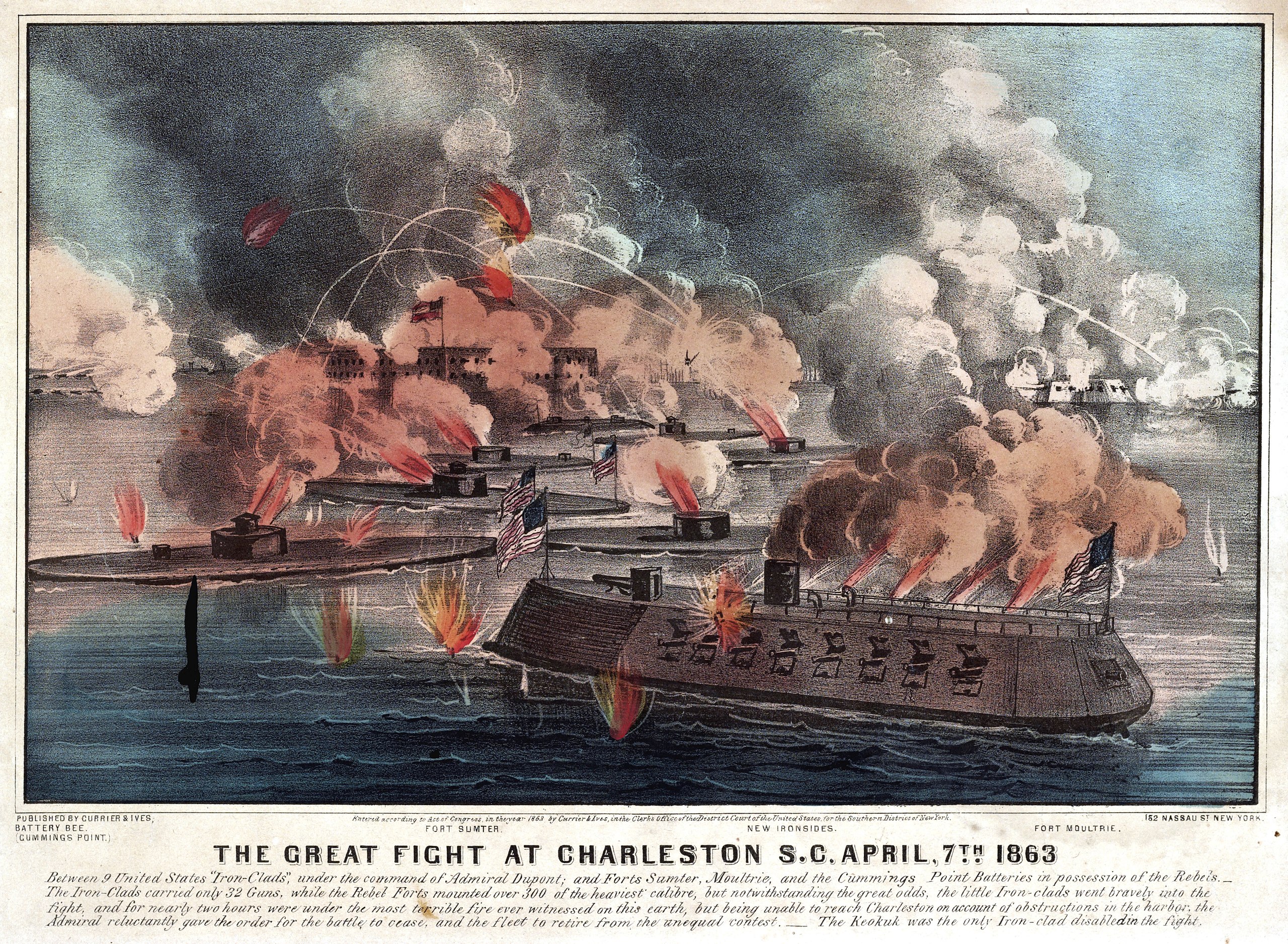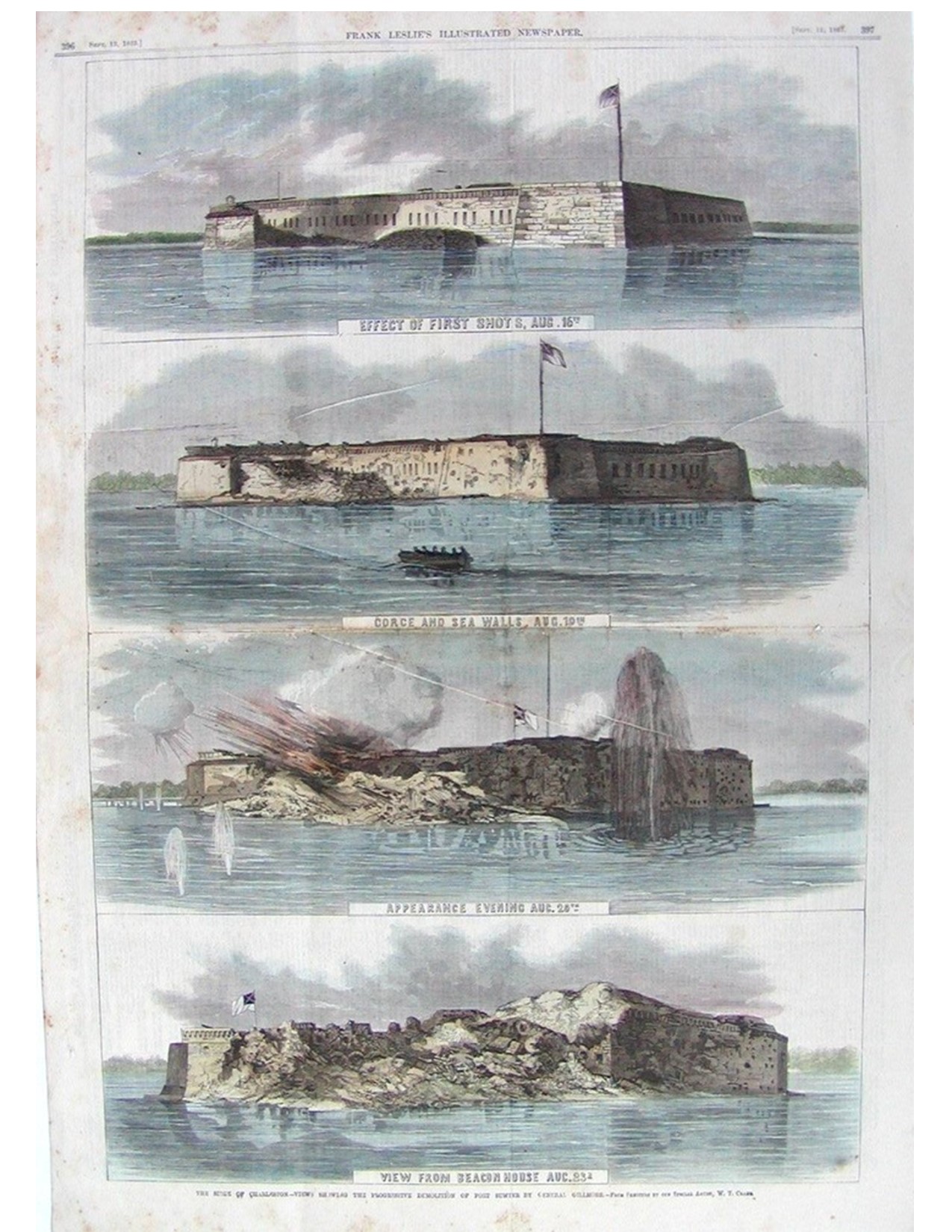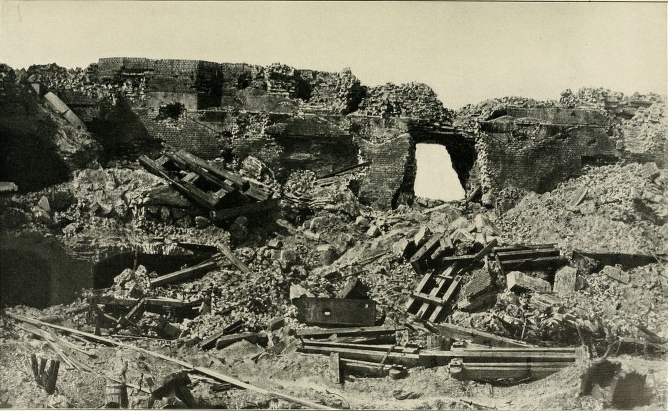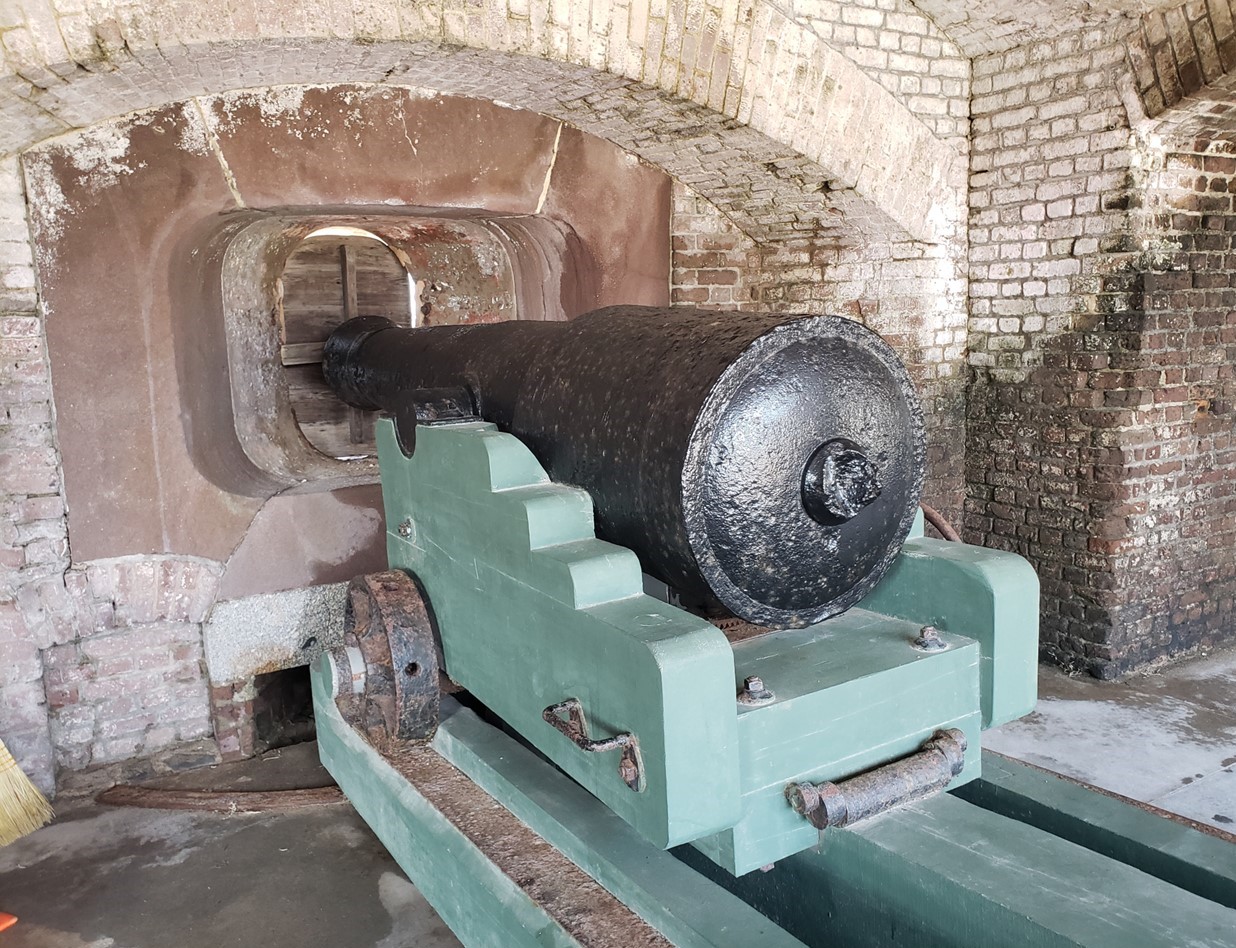Blog 11/26/2020 - Civil War - Fort Sumter
MHT Blog November 26, 2020 - Civil War – Charleston, SC
The Battles of Fort Sumter
Most of us know that the first shots of the Civil War were fired at Fort Sumter in Charleston, SC Harbor. Major Anderson, USA had refused to surrender the fort and his 85-man garrison that had moved from Fort Moltrie to Sumter. Beginning at 4:30 a.m. on April 12, 1861 the South Carolina Militia bombarded the fort from artillery batteries around the harbor. Although the Union garrison returned fire, they were significantly outgunned and, after 34 hours, Major Anderson surrendered the fort. Surprisingly there were no fatalities on either side as a direct result of the artillery exchange. However, an accidental gun explosion during the surrender ceremonies on April 14 resulted in Pvt Daniel Hough, a Union artillerymen's death, the first of what would become the Civil War.

Far less is known of the Union efforts to take Charleston Harbor with retaking Fort Sumter as the first step. It began on April 7, 1863, when RADM Du Pont (of the Delaware Gunpowder Conglomerate), Commander of the South Atlantic Blockading Squadron, led nine Union ships in an attack on the harbor's defenses. The attacking fleet was the largest deployment of monitors in action up to that time with the ironclad frigate New Ironsides, the tower ironclad Keokuk, and the monitors Weehawken, Pasaic, Montauk, Patapsco, Nantucket, Catskill, and Nahant. The attack was unsuccessful, as Du Pont's flagship & best ship, USS New Ironsides never effectively engaged Fort Sumter. The Union ironclads fired only 154 rounds at the fort, while 2,209 shells were fired by the Confederate defenders sinking the USS Keokuk off the southern tip of Morris Island. Over the next month, working at night to avoid the attention of the Federal squadron, the Confederates salvaged the USS Keokuk's two eleven-inch Dahlgren guns. One still rests today in Charleston’s Battery Park.

In August 1863, the Union initiated a devastating bombardment on Fort Sumter destroying much of the fort and fired long-range artillery at the city of Charleston for nearly two years with the most feared Union siege gun being the Parrott rifled gun named the Swamp Angel.

After the failed naval attack, the Union, decided on a joint Federal Army and Navy assault on the wreckage of the fort. RADM Dahlgren, now commanding the South Atlantic Blockading Squadron, refused to place his sailors and Marines under the command of an army officer, Major General Gillmore. So, cooperation between the Army and Navy was poor so two seperate flotillas set out towards Fort Sumter on the night of September 8–9, 1863. The army flotilla was detained off Morris Island by a low tide.

The US Navy's assault involved 400 sailors and Marines in 25 boats. The operation was a fiasco from the start as the operation had poor reconnaissance, planning and communications. CDR Stevens, commanding the monitor USS Patapsco, was placed in charge of the assault being told by Dahlgren, "There is nothing but a corporal's guard [about 6–10 men] in the fort, and all we have to do is go and take possession." Dahlgren vastly underestimated the Confederate garrison probably believing it would be an easy victory for the US Navy. However, less than half of the Navy boats reached the fort. Those that did landed on the rocks below the fort rather the chosen site where there was a passable beach. The Union Marines and sailors who did land could not scale the fort's walls despite the heavy destruction by the August barrages. The Confederates fired down upon the landing boats as well as throwing hand grenades and loose bricks. The men in the boats that had not landed fired muskets and revolvers blindly at the fort, endangering the landing party ashore more than the garrison. The landing party survivors took shelter in shell holes in the fort's wall while Fort Johnson and the Confederate warship CSS Chicora added their fires upon the Union boats and landing party. The remaining boats retreated and the landing party quickly surrendered. Union casualties were 8 killed, 19 wounded, and 105 captured. The Confederates did not suffer a single casualty in the assault. By the time the Army boats arrived, the Navy assault had already been defeated so the Army's small boat flotilla returned to shore.

The National Park Service have an outstanding museum and ferry to Fort Sumter and is well worth the trip to see before like other Civil War History it is erased by the "cancel culture" revisionists.
